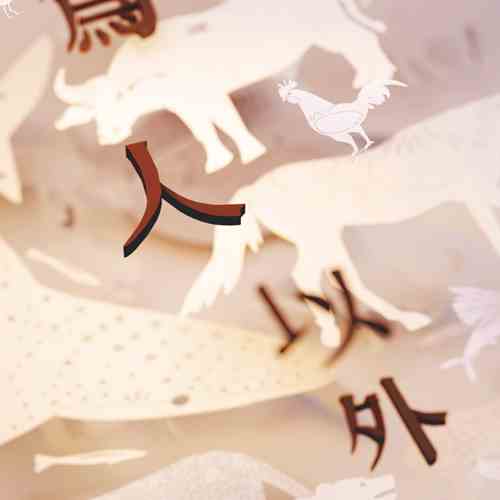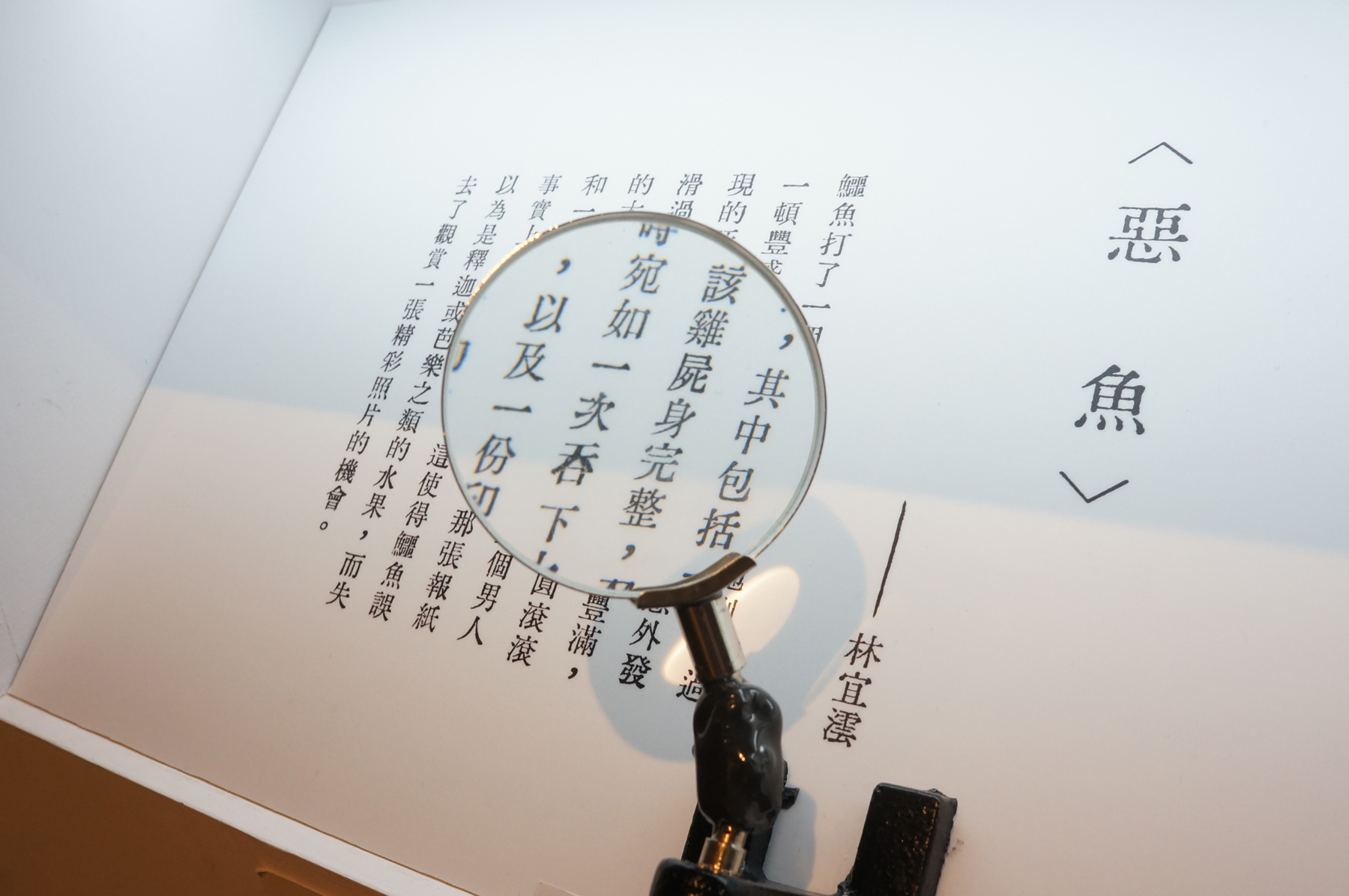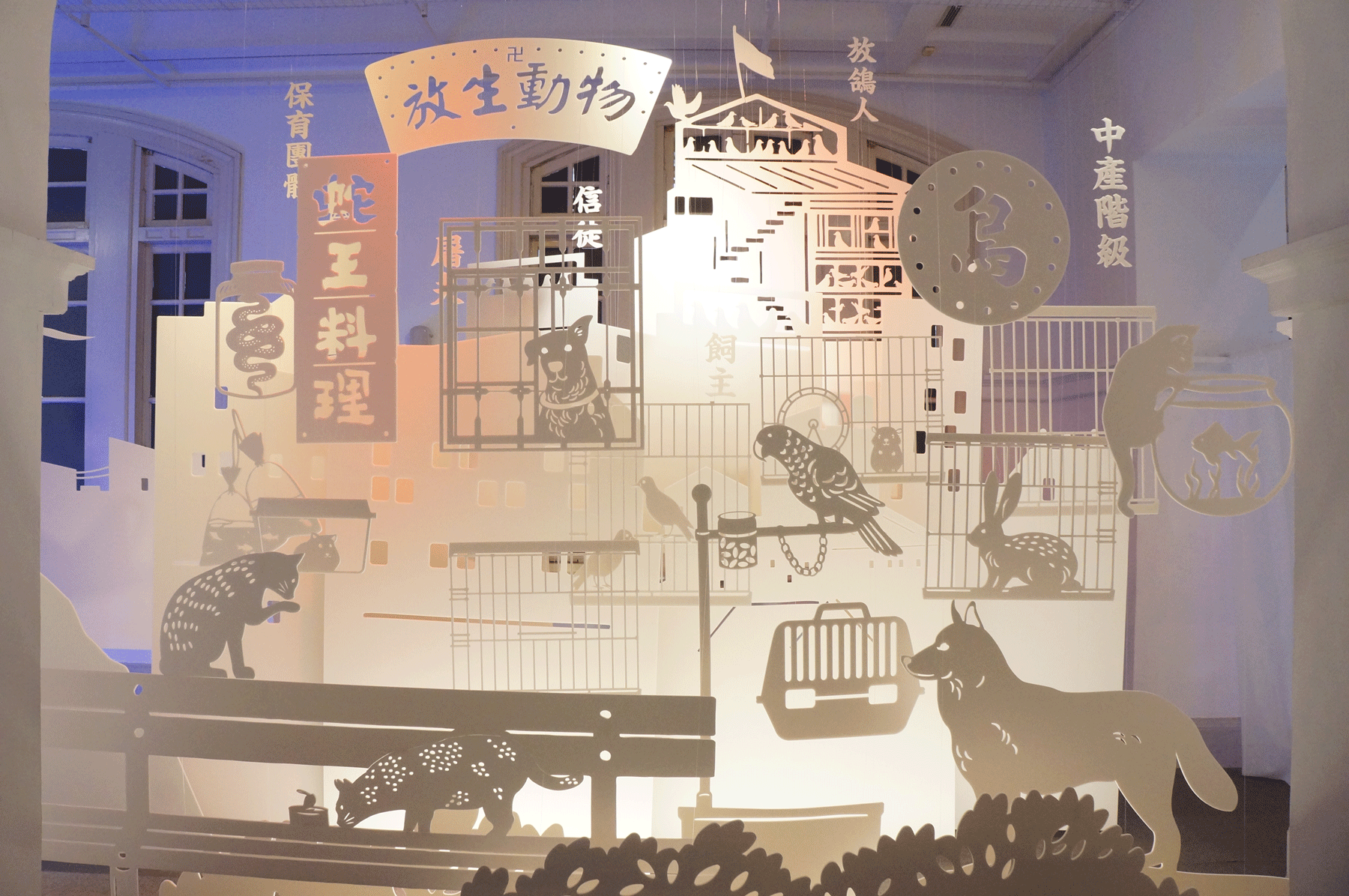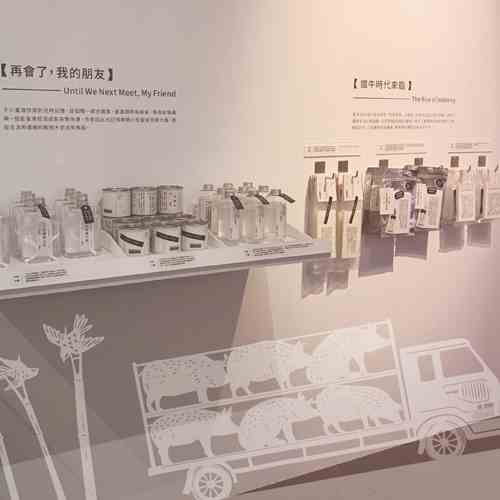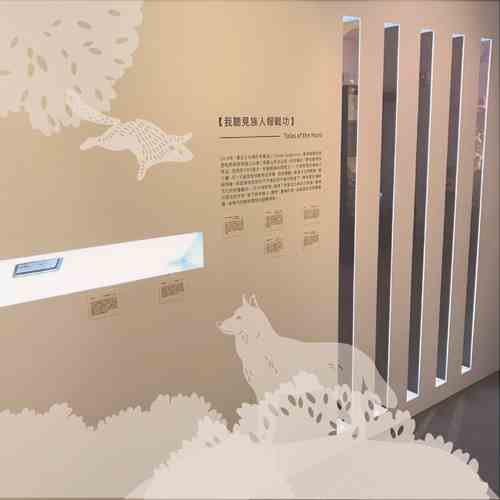"Fat Cat" and "The Beast"|Gritty Realism or Spiritual Redemption|Survivors in the Shadow of Civilization|Animals as Afterthought in Modern Society
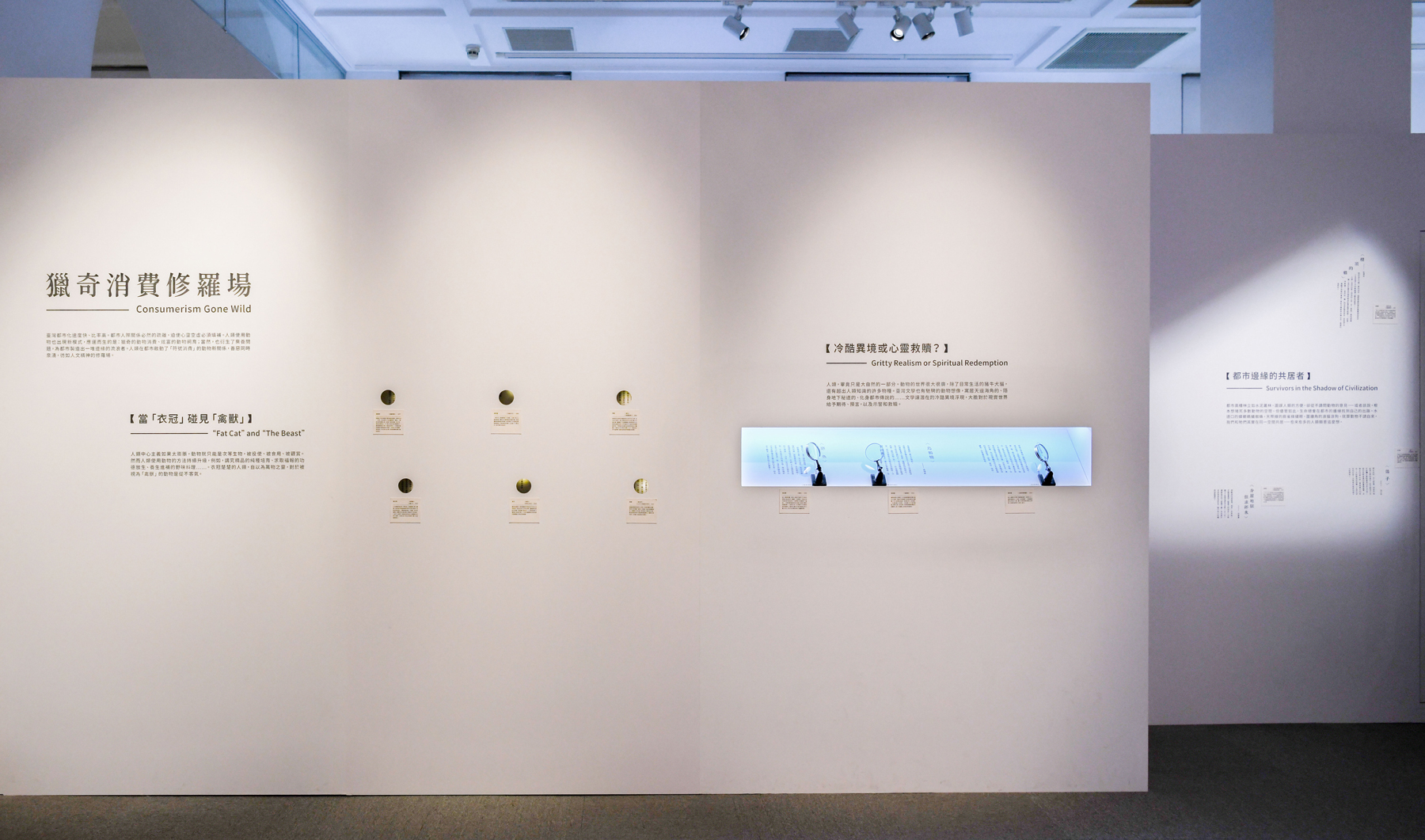
The social fabric suffered in Taiwan's rapid urbanization, leaving many yearning for companionship and to feel needed again. Pet ownership took off, which, while helping fill this most human of needs, minted a new symbol of affluence. However, demand for the chicest of cuddly companions turned increasing numbers of less-desirable, out-of-fashion pets out onto the streets as urban strays. Taiwan's urbanites had now turned animals into "symbolic consumption" items that could be pampered as quickly as they could be tossed aside in favor of the next latest thing.
✧ "Fat Cat" and "The Beast"
Acute anthropocentrism promotes the idea of animals as secondary creatures to be used, consumed, and acknowledged at will. Our use of animals continues to intensify, with pets bred for breed purity, wild animals caught simply for the purpose of being later released for religious piety points, and wildlife poached for the reputedly tonic effects of their bodily parts. Smartly dressed humans smugly see themselves as master of all, with no inherent responsibility for the care or protection of "lesser" creatures.
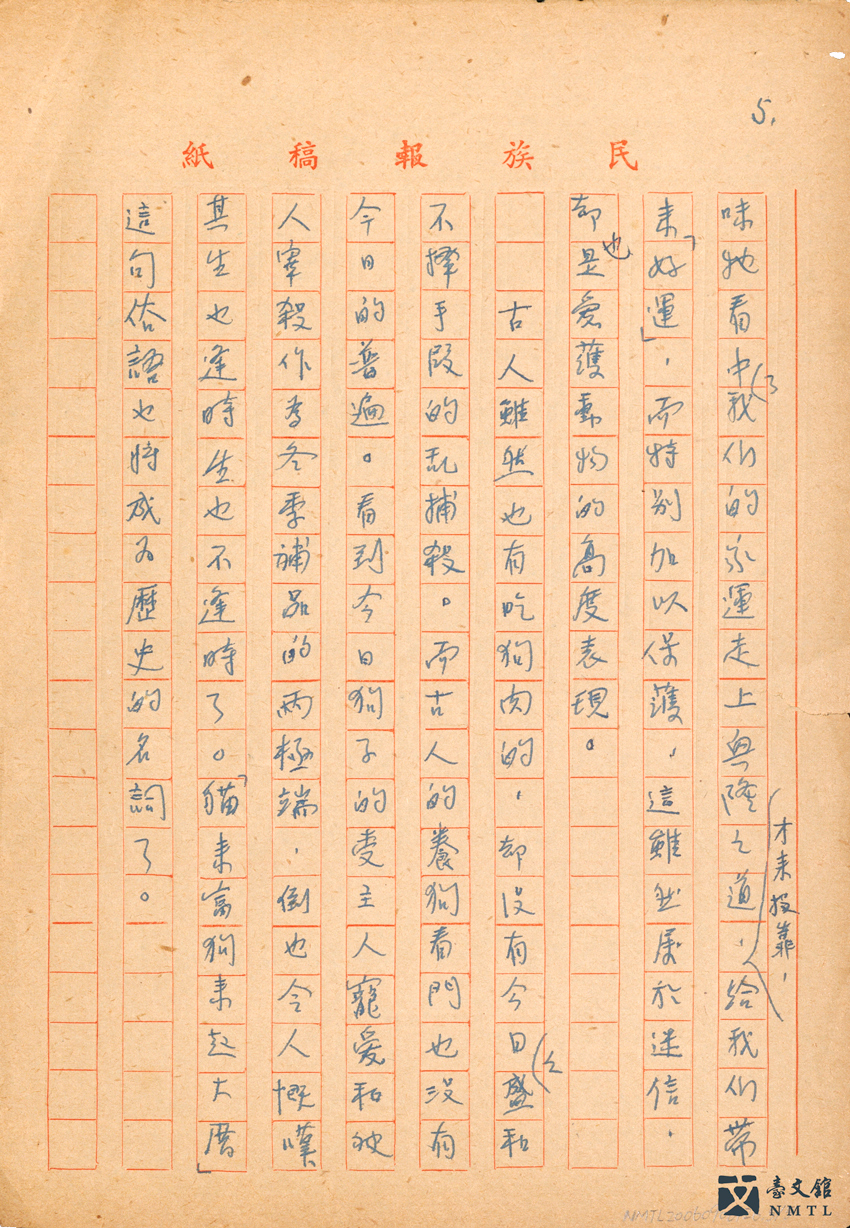
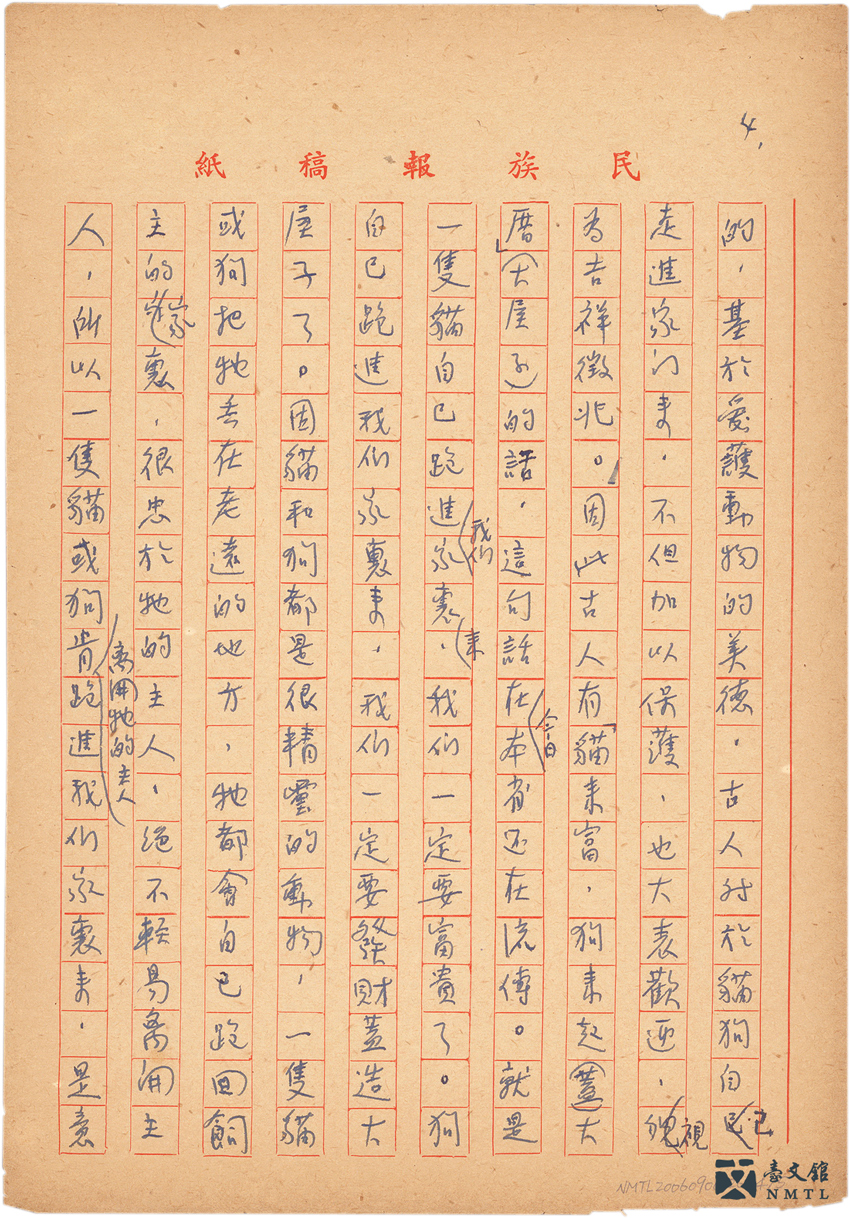
⁍ "Cats Bring Wealth and Dogs Bring Big Houses" by Wu Man-sha
"Cats Bring Wealth and Dogs Bring Big Houses" was originally a vernacular saying. The author uses this as the title to explain the difference in the handling and caring of cats and dogs between ancient and modern times. The author believes that, in today's society, cats and dogs are considered lucrative commodities nowadays. For example, the central and southern regions have been infested with rats due to cats' accidental ingestion of pesticides, so that many people went up north in search of domestic cats. On the other hand, many people trapped dogs for sale, and marketed the dog meat as "fragrant meat." (Donated by Wu Ming-yueh / From the National Museum of Taiwan Literature permanent collection)
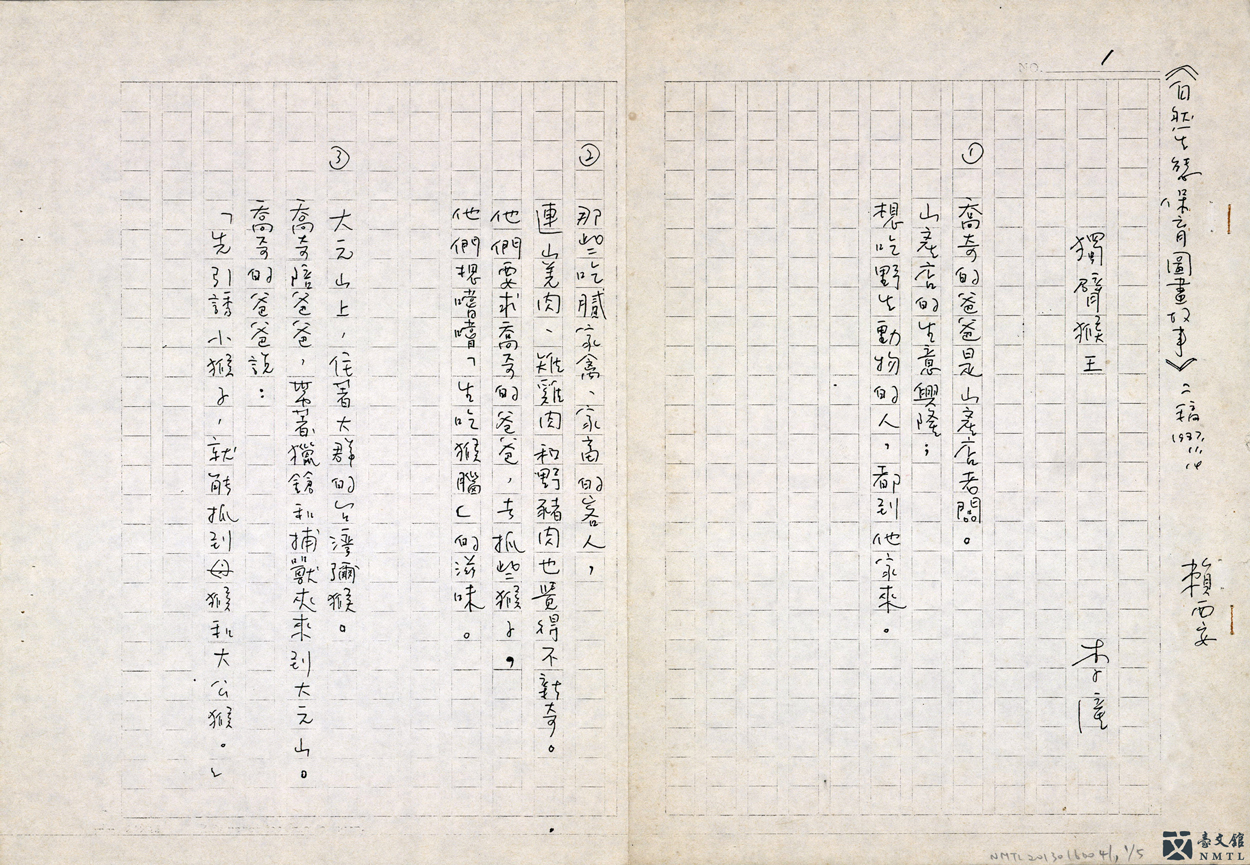
⁍ "The Single-armed Monkey King", by Li Tung
The author's real name is Lai Hsi-an. He is devoted to children's literature and uses the homophonic sound for "Li Tung" in the Taiwanese language for "children" as his pen name. This piece was jointly commissioned by the Council of Agriculture of the Executive Yuan and the Mandarin Daily News as a compilation book of drawings about ecological conservation. The first edition was released in 1988. The book mentions the game meat shops and animal hunting which were prevalent at the time. The story engages readers into self-reflection as the protagonist was injured by a trap he set up for hunting but rescued by the "Single-armed Monkey King" and his group of monkeys previously wounded by his trap. (Donated by Chu Chien-tai / From the National Museum of Taiwan Literature permanent collection)
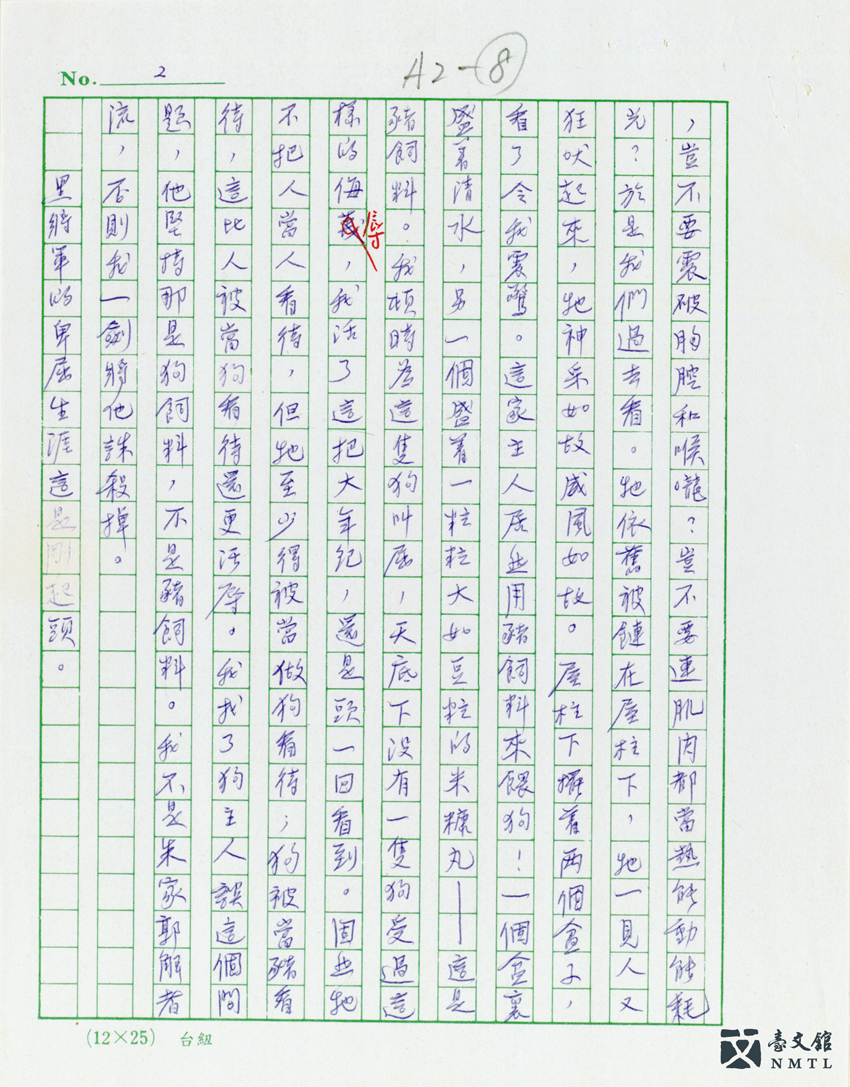
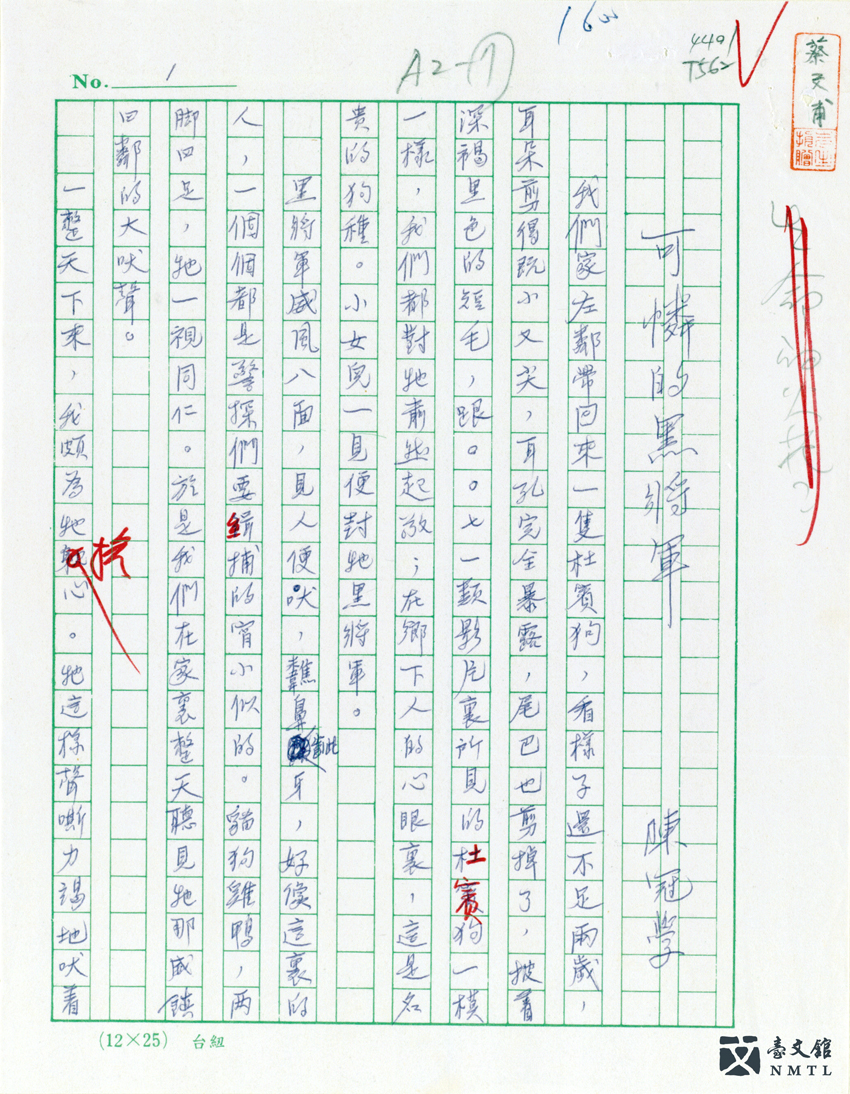
⁍ "The Poor Black General", by Koarnhak Tarn
The protagonist of "The Poor Black General" is actually a black Doberman; the "Black General" belonged to the author's neighbor. As the owner failed to treat him well, he was frail and sickly, but still remained loyal to his owner. The author could not help but feel sorry for him, and was critical of the owner, which naturally shows the author's respect and concern for all living beings. Koarnhak Tarn's masterpiece THE FALL AMONG THE FIELDS is a documentary work from early natural ecological and humanistic literature. (Donated by Tsai Wen-fu of the Chiuko Publishers / From the National Museum of Taiwan Literature permanent collection)
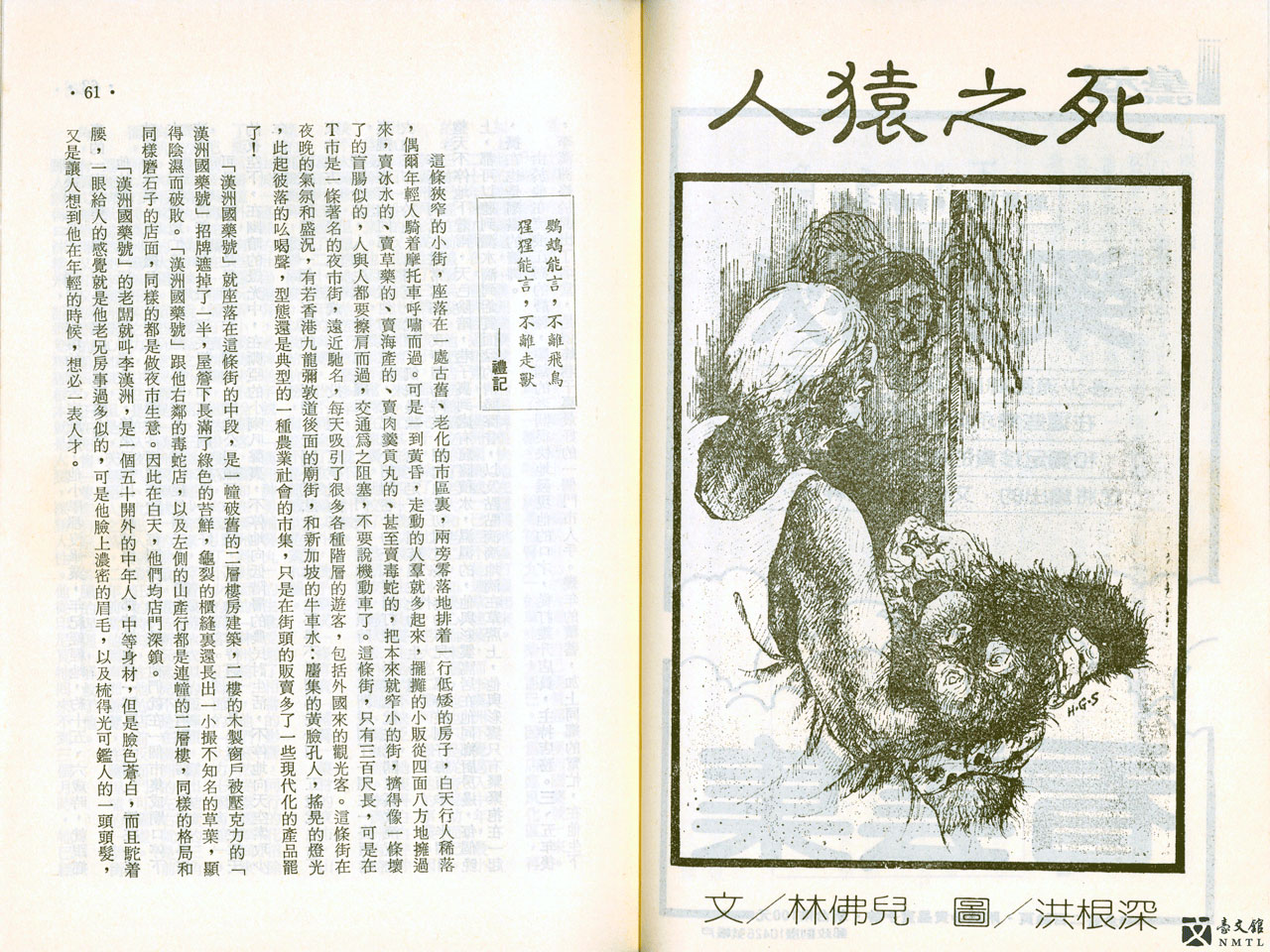
⁍ "Death of the Ape" by Lin Fo-erh
This work was first published in 1985 in Volume 1, Issue 4, No. 4 of THE REASONING MAGAZINE. In the 1980s, the capturing of exotic animals and the interest in folk remedies have made animal hunting and trading popular and running amok. We can get a glimpse of this through this work by Lin. It was not written with the intention to advocate animal protection, but in the form of a mystery novel, it depicts the streets of Taiwan at that time, reflecting on the particular era when the traders and pawns mixed and traded on the sidewalks and among the alleys, where they would come into contact with apes. The depiction is vivid and delicate, unfolding in suspense and presenting the contradiction and irony between human nature and animal emotions. (Donated by Yeh Shih-tao / From the National Museum of Taiwan Literature permanent collection)
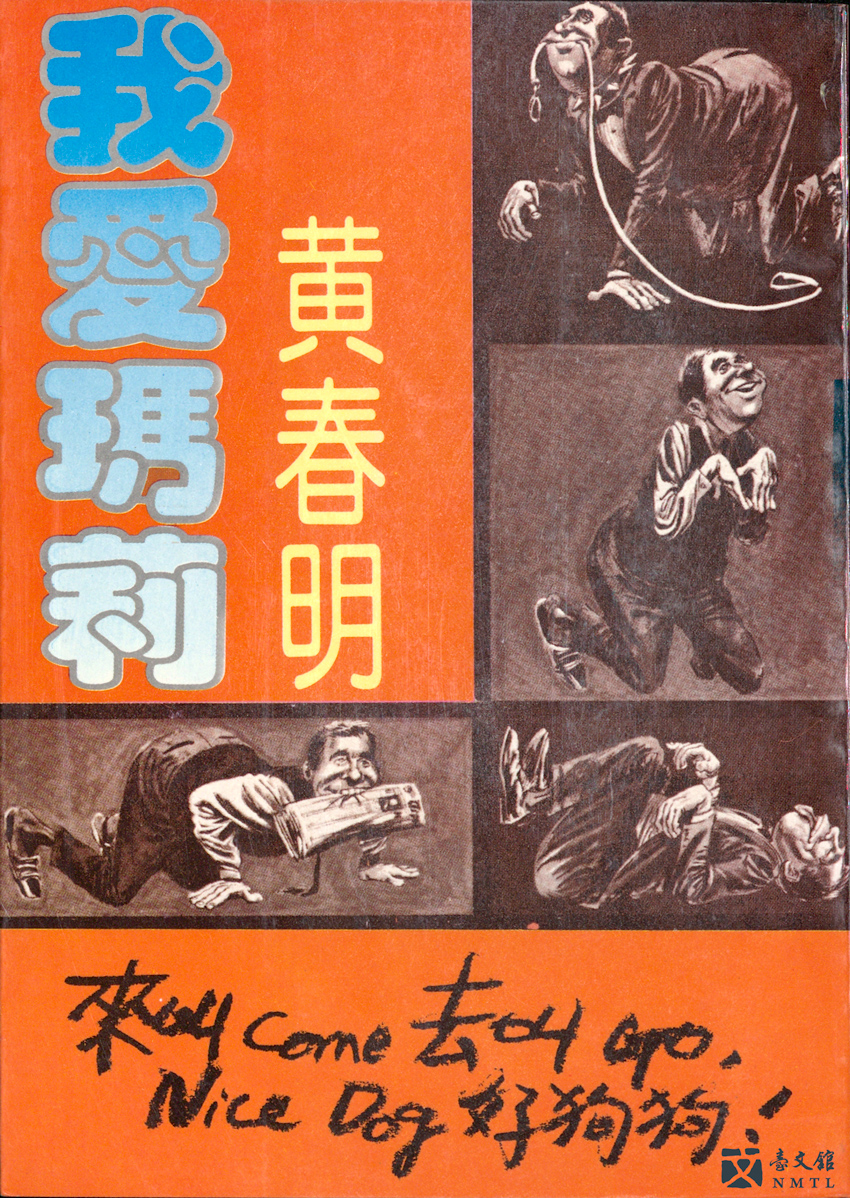
⁍ I LOVE MARY, by Huang Chun-ming
This short story was first published in the supplement of the CHINA TIMES in 1977. Following the departure from the village of Luodong to settle in Taipei, the writer withdrew from the realistic rural content and genre and began to write about and mock the various ludicrous social conditions of the City. Just as presented in this story, with the admiration of the Western world, the condition appeared to be even more ironic and thought-provoking when the United States broke off diplomatic relations with Taiwan in 1978, the next year. (Donated by Lee Kuei-shien / From the National Museum of Taiwan Literature permanent collection)
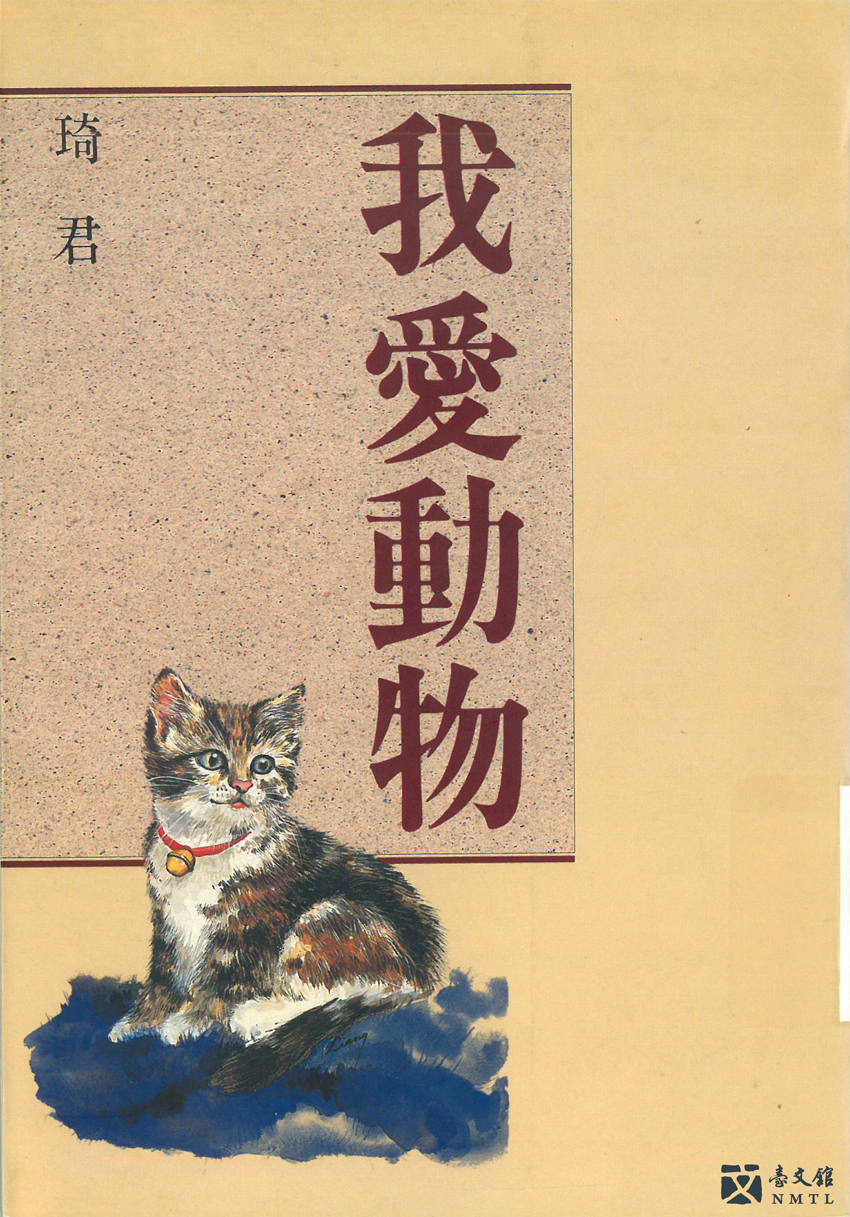
⁍ I LOVE ANIMALS, by Chi Chun
This work was published in 1988. Chi Chun has written short pieces about small animals for many years, and compiled the pieces into this collection. From the preface of the book, we can see that Chi Chun's love for animals since childhood came from the rural environment in her hometown. Her loving mother's care and compassion for all kinds of life deeply influenced her. (From the collection of the library at the National Museum of Taiwan Literature)
✧ Gritty Realism or Spiritual Redemption
But, humans are part and parcel of nature, a vast family that includes farm animals and pets as well as lifeforms of which we still have little understanding or knowledge. The animals portrayed in literature extend farther still – to behemoths inhabiting distant lands, creatures dwelling in subterranean shafts, and beings of urban legend. The imagined realms of literature convey messages of hope, prophecy, warning, and redemption.
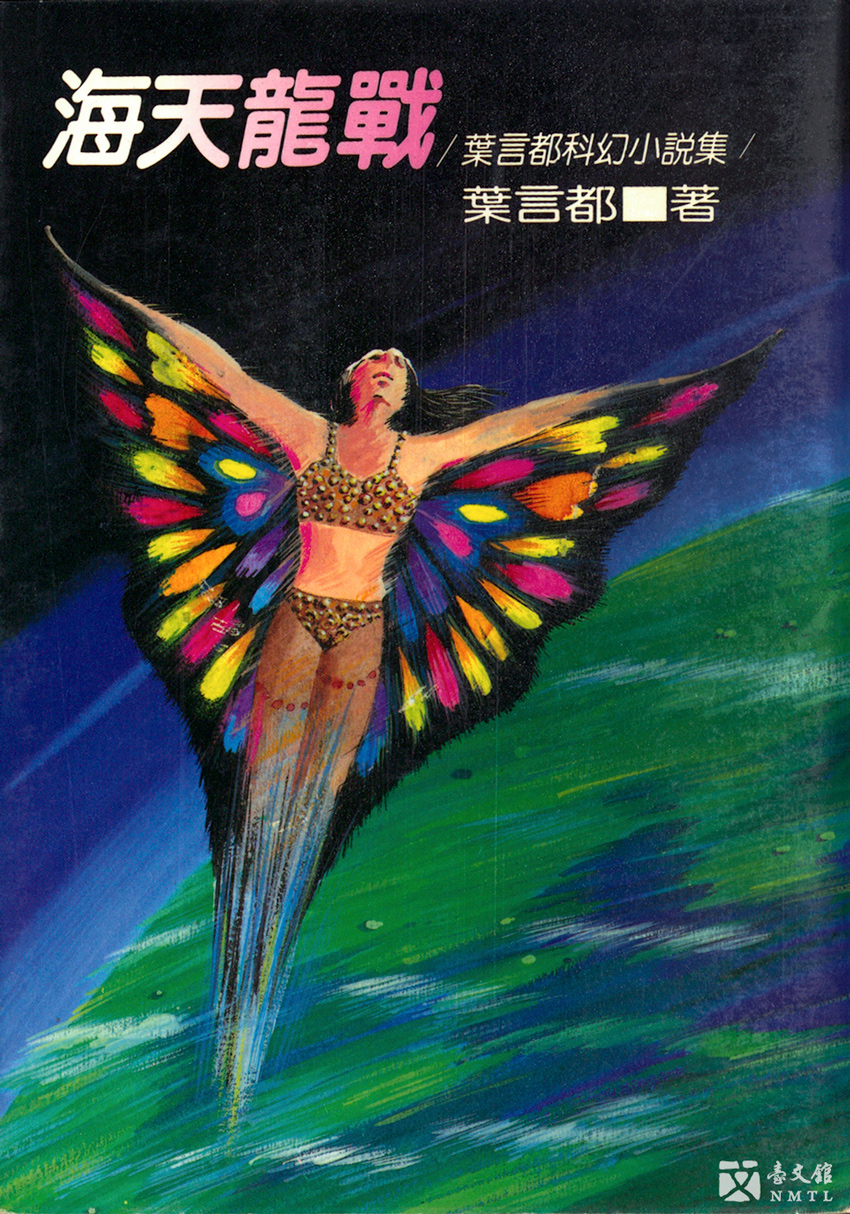
⁍ THE BATTLE OF THE DRAGONS, by Yeh Yen-tou
THE BATTLE OF THE DRAGONS is a collection of science fiction by Yeh Yen-tou, published by the Knowledge System Publishing Co., Ltd. in 1987. It includes stories such as "Tribulation of The Green Monkey" and "The Lost Birds", in which fictional animals are utilized in the development of the story. In "Tribulation of the Green Monkey", the country setting has similar topography as Taiwan's, with its surrounding islands, which is an implication of Taiwan's political environment. The institute where research on biological and chemical weapons is done and the "green monkey disease" that was transmitted by apes into an epidemic outbreak all seem like a prophecy of the coronavirus that is wreaking havoc on the world today. (Donated by Yao Hai-hsing / From the National Museum of Taiwan Literature permanent collection)
✧ Survivors in the Shadow of Civilization
The cement and steel-studded landscape of cities are tailored to the convenience of humans. But what of animals? How many natural habitats have our cities smothered? Even so, nature has found was to survive in our margins, with cockroaches, ants and spiders making homes in sewer drains, sparrows and white-eyes perched on rooftops and power lines, and stray cats and dogs taking refuge in peripheral corners. People increasingly accept that, whether invited or not, we share our urban spaces with a diverse array of wildlife.
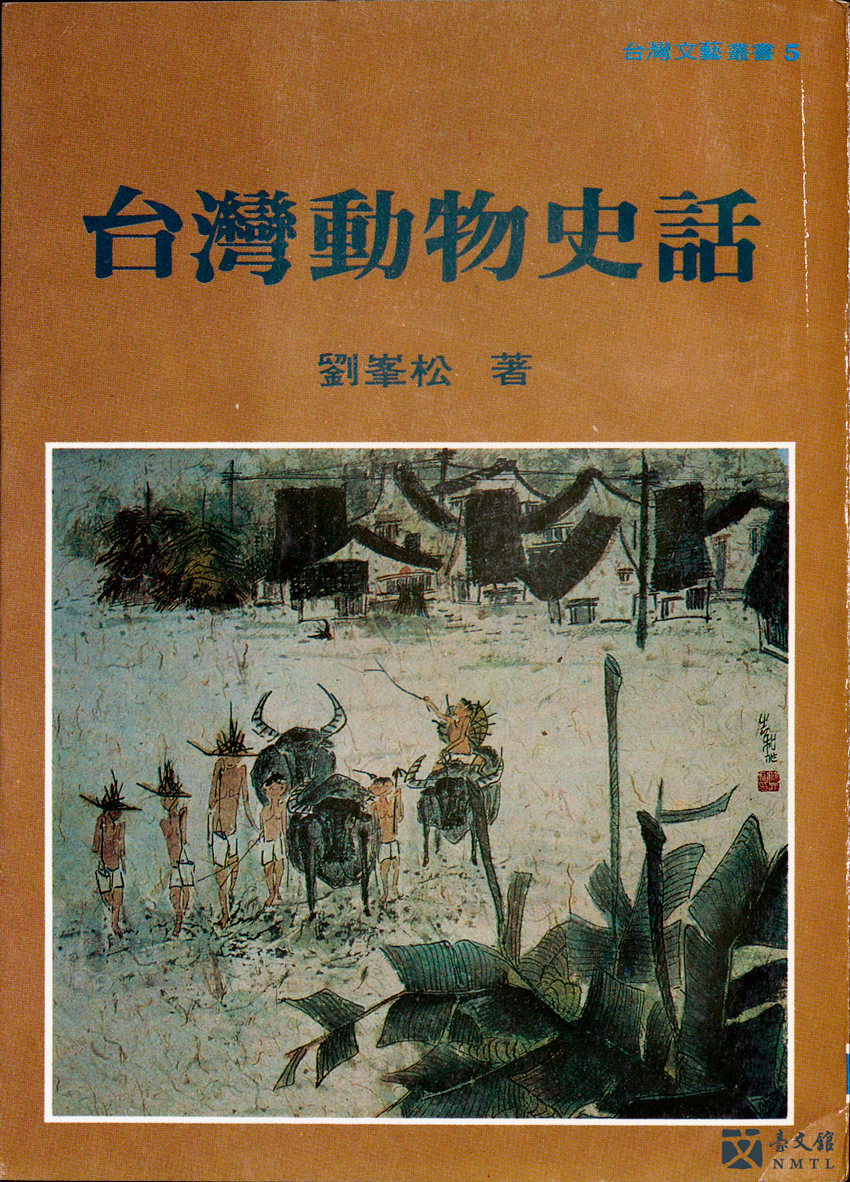
⁍ THE HISTORY OF THE ANIMALS IN TAIWAN, by Liu Feng-sung
The subject matter of this book is not really about animals. Rather, it relates the various types of animal classification to the thoughts and viewpoints he has about culture and life, and he also reflects on people's views of animals in the past. In the olden days, the humancentric ideas regarding animals raised a concept of animal classification, so that they are being hierarchically ranked. Today, the concept has moved on so that we begin to regard all life as the same. (Donated by Lee Kuei-shien / From the National Museum of Taiwan Literature permanent collection)
⨈⨈⨈ ⨈⨈⨈ ⨈⨈⨈
✦ Animals as Afterthought in Modern Society 𓅟 𓃰 𓄁 𓆉
In today's highly urbanized Taiwan, we have created new landscapes for wildlife that have inspired reflection and introspection. During the past two decades, this phenomenon has inspired two main types of animal imagery in literature. The first is the "fantastical beast". Characters of this type have unexpected powers, challenge expected norms, and test the limits of human protagonists. The second is the "faithful companion". Characters of this type center on cats and dogs, beloved as well as maltreated, and critique the modern problems of pet abandonment and strays. Literature helps shed light on the dark underbelly of consumerism and elucidate the deeper significance and value of animals.

